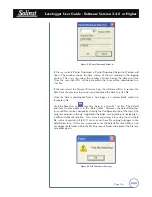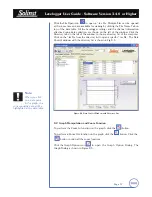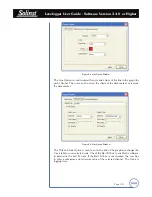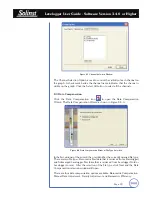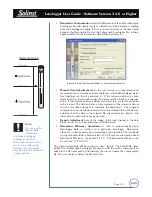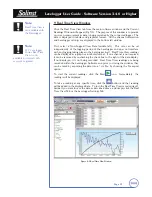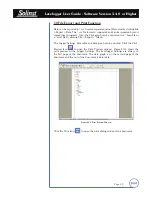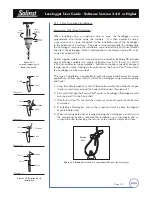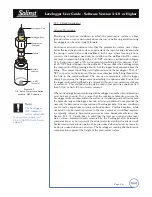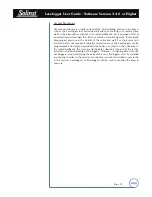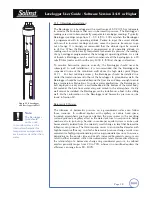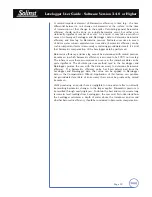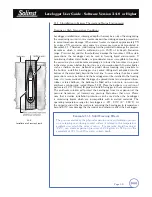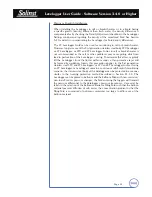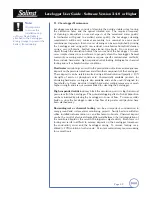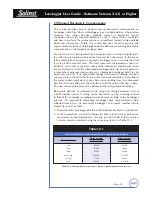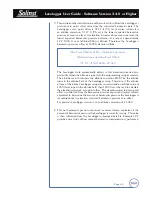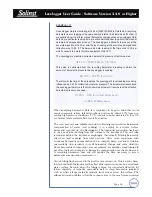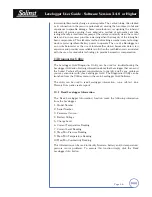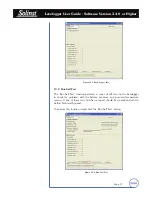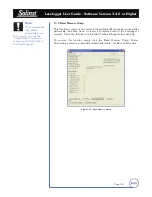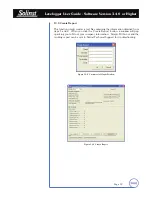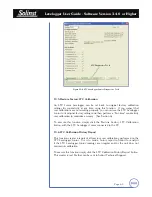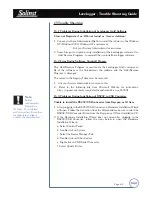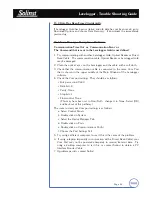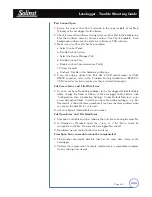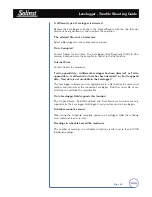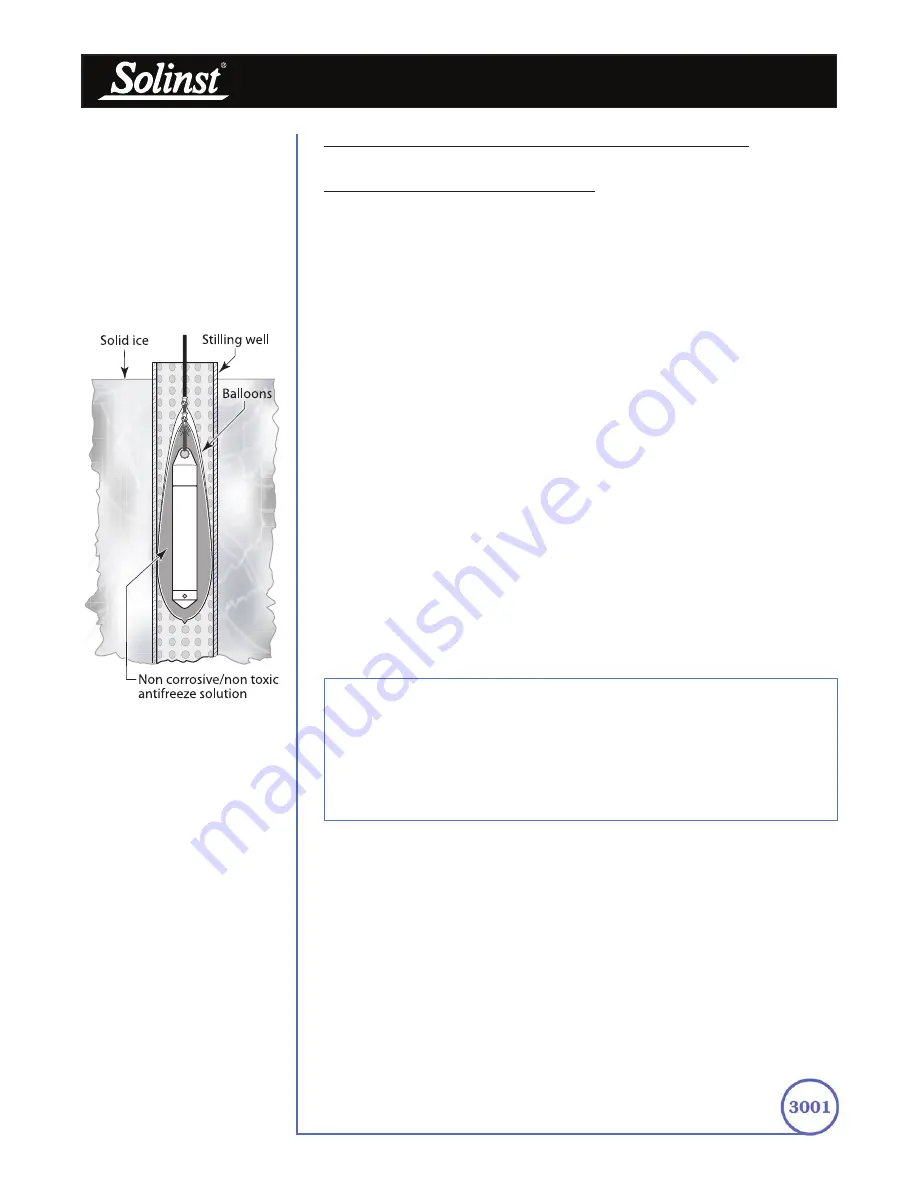
Levelogger User Guide - Software Version 3.4.0 or Higher
Page 50
11.1.4 Installation in Extreme Thermal and Marine Environments
Freezing or High Temperature Conditions
Levelogger installation at submerged depths that may be at risk of freezing during
the monitoring session is not recommended without taking adequate precautions
to avoid transducer damage. When water freezes it expands approximately 9%
by volume. 9% expansion can equate to extreme pressure as demonstrated in
Example 11.1. Therefore, solid freezing has the potential to damage the pressure
transducer, which is rated to withstand up to 150% of its depth fluctuation
range. Pressures beyond this threshold may damage the transducer. With certain
precautions, the Levelogger can be used in freezing liquid environments. If
monitoring shallow water bodies or groundwater zones susceptible to freezing,
the easiest way to avoid transducer damage is to lower the transducer to a point
in the water column below the frost line or ice formation depth. In water bodies
such as shallow streams, wetlands or ponds where freezing may penetrate to
the bottom, install the Levelogger in a vented stilling well imbedded into the
bottom of the water body beyond the frost line. In cases where the above noted
precautions cannot be taken and the Levelogger must be installed in the freezing
zone, it is recommended that the logger be placed inside two elongated silicon,
rubber or latex balloons, the balloons be filled with a non-toxic, non-corrosive
anti-freeze solution and sealed (Figure 11-8). Place the balloons in a section of
perforated, 1.25" (30 mm) ID pipe and install the logger in the monitored water.
The antifreeze solution will protect the Levelogger from ice expansion at the
pressure transducer, yet transmit any pressure fluctuations that occur. Please
note that a similar installation protection can be used when the Levelogger
is monitoring liquids which are incompatible with its wetted materials. The
operating temperature range for Leveloggers is -20° - 80°C (-4° - 180°F). At
the opposite end of the thermal scale, exposing the Levelogger to temperatures
beyond 80°C may damage the thermistor and otherwise affect the Levelogger.
Example 11.1 Solid Freezing Effects
The pressure exerted by the physical expansion or ice crystallization process
on a retaining or enclosing contact surface is related to the temperature
gradient over which the process occurs. For example, liquid freezing at
-22ºC, can create expansion pressures of 22 kg/cm
2
or 313 psi or the
equivalent of 721 ft or 220 m water column depth.
11-9
Installation in Freezing Liquid
Содержание Barologger Gold
Страница 2: ......
Страница 5: ......
Страница 71: ...High Quality Groundwater and Surface Water Monitoring Instrumentation Quick Start Guide Levelogger Series ...

